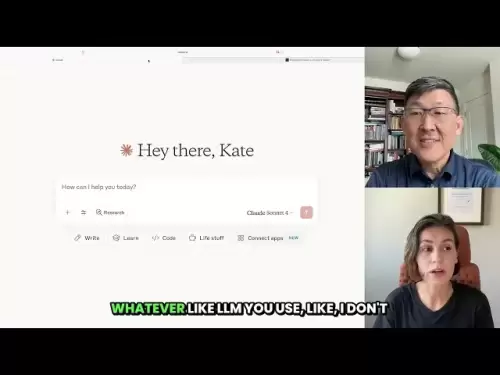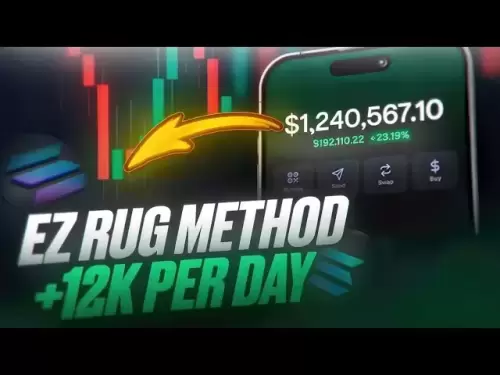-
 Bitcoin
Bitcoin $108,522.9936
0.51% -
 Ethereum
Ethereum $2,600.2119
2.25% -
 Tether USDt
Tether USDt $1.0001
0.00% -
 XRP
XRP $2.3065
1.88% -
 BNB
BNB $661.9093
0.34% -
 Solana
Solana $150.9961
1.40% -
 USDC
USDC $0.9999
0.00% -
 TRON
TRON $0.2877
0.21% -
 Dogecoin
Dogecoin $0.1708
1.78% -
 Cardano
Cardano $0.5863
1.70% -
 Hyperliquid
Hyperliquid $39.0718
4.52% -
 Bitcoin Cash
Bitcoin Cash $507.4600
2.09% -
 Sui
Sui $2.9070
2.06% -
 Chainlink
Chainlink $13.8666
4.64% -
 UNUS SED LEO
UNUS SED LEO $9.1277
0.82% -
 Stellar
Stellar $0.2624
5.86% -
 Avalanche
Avalanche $18.1961
2.40% -
 Shiba Inu
Shiba Inu $0.0...01182
1.77% -
 Toncoin
Toncoin $2.8141
2.42% -
 Hedera
Hedera $0.1611
3.70% -
 Litecoin
Litecoin $87.6537
1.88% -
 Monero
Monero $317.0356
0.02% -
 Polkadot
Polkadot $3.4327
2.63% -
 Dai
Dai $1.0000
-0.01% -
 Ethena USDe
Ethena USDe $1.0006
0.05% -
 Bitget Token
Bitget Token $4.3043
0.50% -
 Uniswap
Uniswap $7.6006
2.93% -
 Aave
Aave $293.0019
4.60% -
 Pepe
Pepe $0.0...01007
3.08% -
 Pi
Pi $0.4658
2.42%
How to manage NFTs on Ledger Live?
You can securely manage NFTs with Ledger Live by connecting to MetaMask and ensuring your wallet supports the correct blockchain.
Jul 09, 2025 at 06:29 am
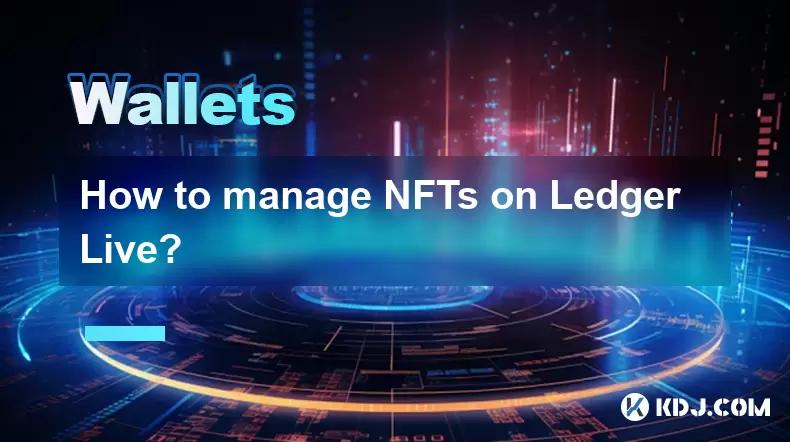
Understanding NFTs and Ledger Live Integration
Non-fungible tokens (NFTs) are unique digital assets that represent ownership of a specific item or content, often stored on blockchains like Ethereum. Ledger Live is a software interface that allows users to manage their cryptocurrencies and interact with decentralized applications (dApps). While Ledger Live itself does not directly support NFT display, it provides the infrastructure needed to securely manage NFT-related transactions.
To begin managing NFTs using Ledger Live, you must first ensure your wallet supports the blockchain where your NFTs reside. For example, if your NFTs are on Ethereum, you need an Ethereum-compatible account within your Ledger Live setup. This compatibility ensures that all NFT interactions—like transfers or approvals—are signed securely via your Ledger hardware wallet.
Setting Up Your Wallet for NFT Management
Before interacting with NFTs, confirm that your Ledger device is set up with the correct apps for the relevant blockchain. Here’s how to do it:
- Open Ledger Live and connect your Ledger Nano S or X.
- Navigate to the Manager section.
- Search for and install the app corresponding to the blockchain your NFTs use (e.g., Ethereum app).
- Once installed, open the app on your device and return to Ledger Live.
Make sure your firmware and apps are updated. Outdated versions may lead to compatibility issues when signing NFT transactions. Also, always verify addresses on both Ledger Live and your dApp interface before approving any action.
Connecting Ledger Live to NFT Marketplaces
Most NFT platforms such as OpenSea, Rarible, or LooksRare allow connection via MetaMask or other wallet providers. Since Ledger Live doesn’t natively integrate with these platforms, you’ll need to bridge the connection through MetaMask while keeping your private keys secure.
Here’s how to proceed:
- Install the MetaMask browser extension.
- Choose the option to import a wallet and follow the prompts.
- When prompted for seed phrase recovery, select “Use hardware wallet” and choose Ledger.
- Follow the instructions in MetaMask to connect your Ledger device.
- Approve the connection from your Ledger hardware wallet.
Once connected, switch the network in MetaMask to match where your NFTs exist (e.g., Ethereum mainnet). Now, navigate to your preferred NFT marketplace and connect your MetaMask wallet. All actions you perform on the marketplace will be signed by your Ledger device, ensuring security.
Viewing and Managing NFTs Linked to Your Ledger
Although Ledger Live does not display NFTs directly, you can view them using external tools like blockchain explorers or wallet extensions. To check your NFT holdings:
- Visit a platform like Etherscan.io (for Ethereum-based NFTs).
- Enter your Ledger Ethereum address into the search bar.
- Click on the “NFT” tab to see a list of associated NFTs.
Alternatively, use MetaMask alongside Ledger Live. After connecting your Ledger to MetaMask, open the Assets tab to view supported NFTs. You can also manually add NFTs by entering their contract address and token ID.
When transferring or selling NFTs:
- Ensure your Ledger device is connected and the correct app is open.
- Initiate the transfer or sale on the NFT marketplace.
- Confirm the transaction using your Ledger when prompted.
Each approval or transfer requires physical confirmation on your Ledger, adding a layer of security against unauthorized access.
Security Best Practices for Managing NFTs with Ledger Live
Since NFTs are high-value digital assets, securing them properly is essential. Always follow these best practices when managing NFTs via Ledger Live:
- Never share your Ledger recovery phrase or approve unknown transactions.
- Use trusted NFT marketplaces and double-check URLs to avoid phishing sites.
- Keep your Ledger firmware and apps updated to prevent vulnerabilities.
- Disable unnecessary permissions on dApps after completing transactions.
- Avoid using public Wi-Fi or untrusted devices when interacting with NFTs.
Additionally, consider maintaining separate accounts for different activities. For instance, use one account for daily trading and another for long-term NFT storage. This separation minimizes risk exposure across your portfolio.
Frequently Asked Questions
Can I store NFTs directly in Ledger Live?
No, Ledger Live does not have native NFT storage or display capabilities. However, it enables secure management of the underlying cryptocurrency accounts that own NFTs on supported blockchains.
Why don’t my NFTs show up in MetaMask even though I’m connected to Ledger Live?
Ensure that the NFTs are compatible with ERC-721 or ERC-1155 standards and that the contract address is added correctly in MetaMask. Some NFTs may not auto-detect due to technical limitations or unsupported formats.
Is it safe to connect Ledger Live to third-party NFT platforms?
Yes, as long as you’re using official platforms and verifying each transaction on your Ledger device. The private keys never leave your hardware wallet, so the connection remains secure.
Can I manage NFTs on blockchains other than Ethereum using Ledger Live?
Yes, provided that the blockchain has a compatible app available in Ledger Live. For example, you can manage NFTs on Tezos, Algorand, or Binance Smart Chain if those apps are installed and configured properly.
Disclaimer:info@kdj.com
The information provided is not trading advice. kdj.com does not assume any responsibility for any investments made based on the information provided in this article. Cryptocurrencies are highly volatile and it is highly recommended that you invest with caution after thorough research!
If you believe that the content used on this website infringes your copyright, please contact us immediately (info@kdj.com) and we will delete it promptly.
- MAGACOIN's Meme Coin Surge: The Next DOGECOIN?
- 2025-07-09 12:30:12
- Bitcoin Price: Is Stability Above $100K Setting Up a Monster Rally?
- 2025-07-09 12:30:12
- MAGACOIN FINANCE: TrustScore and the Future of Meme Coins
- 2025-07-09 12:35:12
- Crypto Whale's Portfolio: Decoding Token Stashes and Emerging Trends
- 2025-07-09 08:30:12
- Rare Coin, Lucky Find, Valuable Coin: Unearthing Treasures in Everyday Change
- 2025-07-09 08:30:12
- Coinbase, Altcoins, and the Empire State: A New Era for New York Crypto?
- 2025-07-09 09:30:12
Related knowledge

How to connect Trezor to Rabby wallet
Jul 09,2025 at 05:49am
What Is Trezor and Rabby Wallet?Trezor is a hardware wallet developed by SatoshiLabs that allows users to securely store their cryptocurrency assets o...

What happens if I forget my Trezor passphrase
Jul 09,2025 at 03:15am
Understanding the Role of a Trezor PassphraseIf you use a Trezor hardware wallet, you may have set up a passphrase as an extra layer of security beyon...
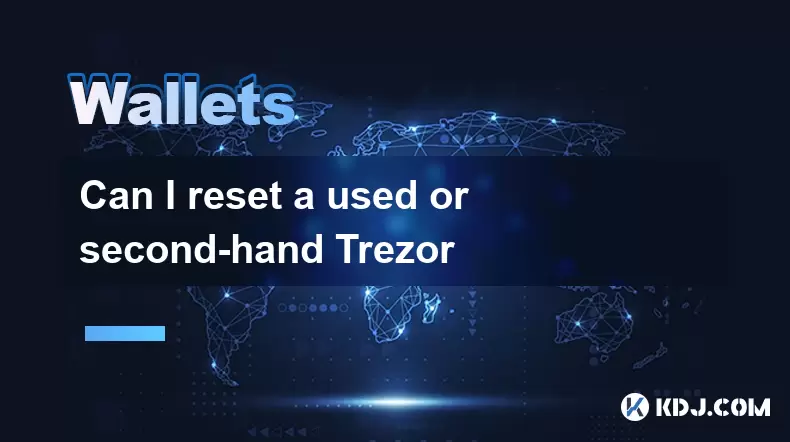
Can I reset a used or second-hand Trezor
Jul 09,2025 at 11:49am
Understanding the Reset Process for a Used or Second-Hand TrezorIf you have acquired a used or second-hand Trezor wallet, one of the first things you ...
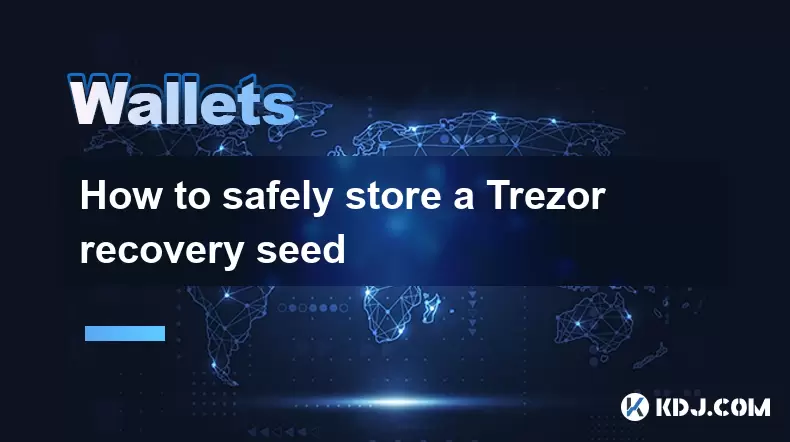
How to safely store a Trezor recovery seed
Jul 09,2025 at 11:22am
Understanding the Importance of a Trezor Recovery SeedA Trezor recovery seed is a sequence of 12 or 24 words generated during the initial setup of you...
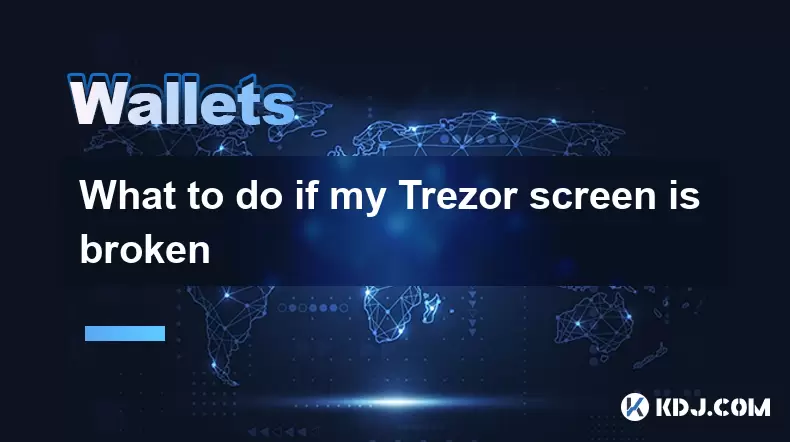
What to do if my Trezor screen is broken
Jul 09,2025 at 10:36am
Understanding the Impact of a Broken Trezor ScreenIf your Trezor screen is broken, it can significantly affect how you interact with your cryptocurren...
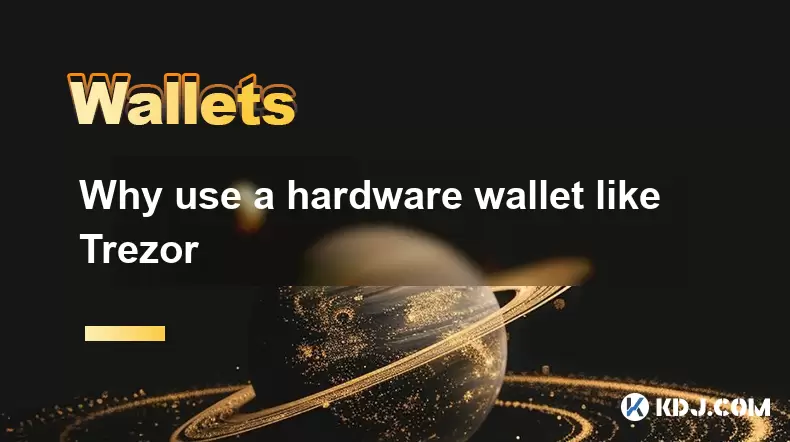
Why use a hardware wallet like Trezor
Jul 09,2025 at 11:00am
What Is a Hardware Wallet and Why It MattersA hardware wallet is a physical device designed to securely store the private keys of cryptocurrencies off...

How to connect Trezor to Rabby wallet
Jul 09,2025 at 05:49am
What Is Trezor and Rabby Wallet?Trezor is a hardware wallet developed by SatoshiLabs that allows users to securely store their cryptocurrency assets o...

What happens if I forget my Trezor passphrase
Jul 09,2025 at 03:15am
Understanding the Role of a Trezor PassphraseIf you use a Trezor hardware wallet, you may have set up a passphrase as an extra layer of security beyon...

Can I reset a used or second-hand Trezor
Jul 09,2025 at 11:49am
Understanding the Reset Process for a Used or Second-Hand TrezorIf you have acquired a used or second-hand Trezor wallet, one of the first things you ...

How to safely store a Trezor recovery seed
Jul 09,2025 at 11:22am
Understanding the Importance of a Trezor Recovery SeedA Trezor recovery seed is a sequence of 12 or 24 words generated during the initial setup of you...

What to do if my Trezor screen is broken
Jul 09,2025 at 10:36am
Understanding the Impact of a Broken Trezor ScreenIf your Trezor screen is broken, it can significantly affect how you interact with your cryptocurren...

Why use a hardware wallet like Trezor
Jul 09,2025 at 11:00am
What Is a Hardware Wallet and Why It MattersA hardware wallet is a physical device designed to securely store the private keys of cryptocurrencies off...
See all articles





















